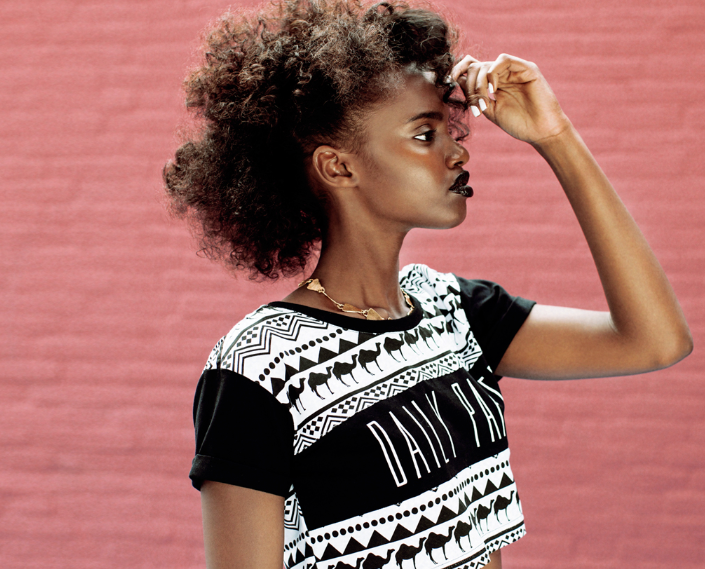
As African women, most of us have become so used to having protective hairstyles that we’re more concerned about attaining a style than doing what’s best for the health of our own hair.
Instead of nurturing our natural hair and preventing damage, we’re often in a situation of trying to take action when the damage is already done.
Let’s reverse this trend ladies and take care of our natural hair first. Here is what you need to know to get the process started . . .
1) How damaging is it to relax your hair directly after undoing a hairstyle?
“This depends on the condition of the hair and scalp after the style. If the hair feels fragile and the scalp is dry and flaky, it’s not advisable to apply any sort of chemicals,” says Candice Thurston, owner of Candi & Co, a salon that specialises in ethnic hair. “It’s advisable to rather just shampoo and apply an intense scalp and hair treatment over three or four weeks before using any chemicals.
If the hair and scalp are in a healthy condition, a relaxer can be applied, but it would still be advisable to apply a scalp and hair treatment every two weeks.
2) How often should hair be relaxed?
Most hairstylists will tell you that the average is about every four to six weeks. While this isn’t necessarily wrong, what many fail to mention is that if you put off relaxing your hair for longer, it will grow more and be healthier.
To keep their hair looking ‘just done’, most women want to retouch at the first hint of new growth, but it’s important to remember that relaxers contain chemicals that may be damaging to your hair and scalp. When you extend the time between relaxing treatments, there is a distinct line visible between new growth and the relaxed part of your hair. This makes it easier for the hairdresser to apply the relaxer only to the regrowth, and prevents the already-relaxed hair from getting a second coat of chemicals.
If you want to really improve the health of your hair, we advise stretching the time between your relaxer touch-ups to between 12 and 20 weeks. Should you choose to stretch your relaxer time, you need to moisturise like never before because regrowth gets very dry and needs nourishment to prevent breakage. You could also get a protective hairstyle to hide the growth, but don’t keep it for too long.
3) What leads to hair loss or a thinning hairline?
The pulling on the scalp from plaiting weakens hair and may lead to a loss of hair at the hairline. Keeping braids and weaves on for too long also leads to damaged hair, as well as over-processing.
TIP: Try to vary your hairstyles so you’re not always pulling in the same area.
4) What is the most important thing most women need to understand about their hair?
Hair is a combination of moisture and protein and those are the two elements women need to remember when thinking about hair care. Celebrity hairstylist and owner of Lajawi Beaute Cafe, Jawad Maphoto, says hair is weakened and stripped of moisture and protein by relaxers and any type of braiding. So, if you want strong healthy hair, you need a proper protein-moisture balance. This is achieved by doing protein- and moisture-rich treatments to help minimise breakage and strengthen your hair.
Hair oils that contain natural oils such as castor oil and argan oil should be used daily to stimulate growth and keep the hair strong. When choosing shampoos and conditioners opt for protein-based ones that will moisturise hair.
5) Are there any products one can use while they have their protective hairstyle to prevent damage to their hair and scalp?
“It is key to have a daily aftercare treatment and wash weekly. The Ladine Scalp Treatment is an aftercare product that can be applied to the hairline and scalp,” advises Candice. It is also important to wash, treat and dry the protective style under a hooded dryer. Drying hair thoroughly is key to prevent damp hair, which leads to matting and unpleasant odours.
6) Is it advisable to relax today and do a protective hairstyle the same or next day?
“Hair is just like a plant, it needs air, water and a bit of exposure to the sun to grow healthily,” says Godfry Katsande, owner of haircare brand T444Z. It’s not advisable to style your hair right after you’ve relaxed it as your scalp and hair are still sensitive.
Most women who find themselves with damaged hair immediately get a protective style to hide their hair instead of taking time to replenish and take care of it.
Candice says it depends on the style of weave and technique of plaiting. If you have a U-Part weave (where your hair is left out and blended into the weave) you can relax and apply the weave. For braiding or a full-closure weave, no relaxer is needed. All you need to do is wash hair and do an intense treatment rich in moisture before application.
7) What are some of the causes of an itchy scalp and how do you stop it?
An itchy scalp is caused by pulling when plaiting, as well as not taking care of your protective hairstyle, leading to your scalp being dry. However, an oily scalp also leads to itchiness, especially if you don’t wash regularly. To prevent it, wash your hair regularly with a moisturising shampoo and conditioner and apply a moisturising hair food.
Great products you should always have in your bathroom cabinet :
- Hair oil
- Sulphate-free shampoo
- A moisturising conditioner
- A mineral oil and petroleum-free hair food
- A heat-protection serum if you regularly your hair using heat
Sources: Naturally Melshary, Black Hair 101

